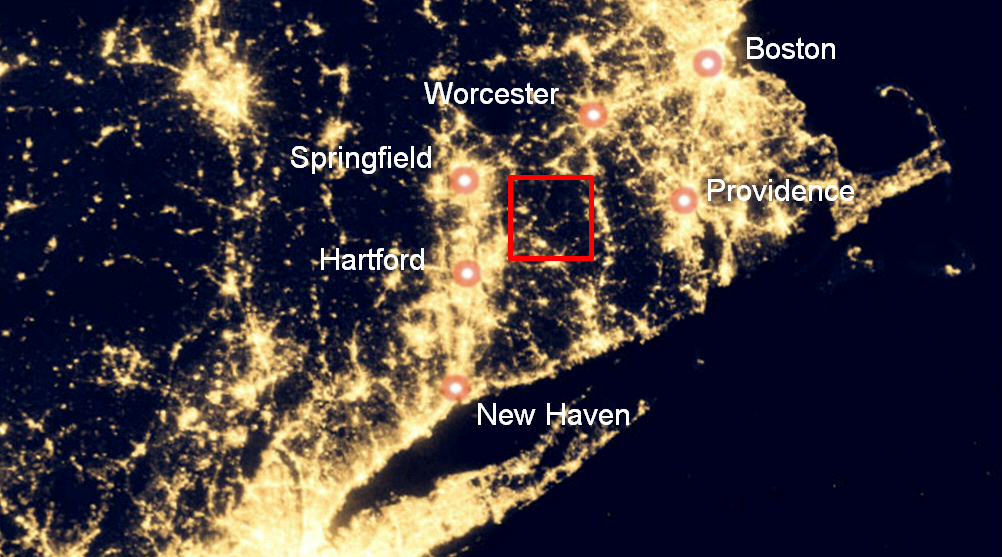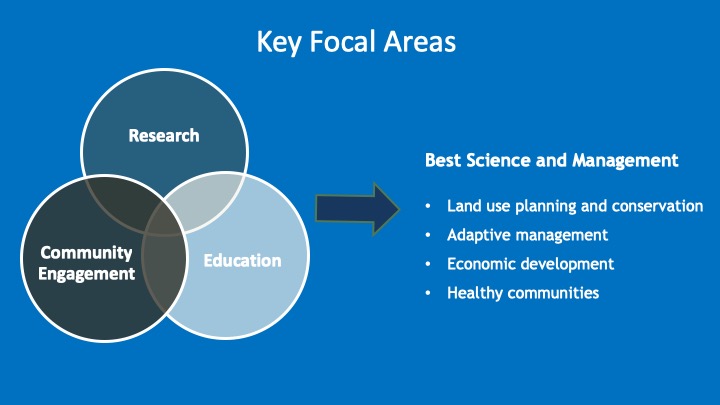About
Why the Quiet Corner?
Viewed from space at night, the East Coast megalopolis is a continuous strip of city lights that stretches over 600 miles from Washington, D.C. to Boston. The Quiet Corner of northeastern Connecticut is an exception, one of the last remaining dark spots in that nighttime image. It is a relatively unbroken stretch of forestland, a landscape which has become increasingly rare in southern New England. These forests provide many important benefits to our communities, including clean water and air, habitat for wildlife, timber and other forest products, climate change mitigation and resiliency, and opportunities for recreation and relaxation.
The Quiet Corner is important not only on its own, but also within its regional setting. It is part of a larger undeveloped swath of land known as the Last Green Valley, which reaches up into south-central Massachusetts and is a designated National Heritage Corridor. QCI’s focus area in the region encompasses three sub-regional watersheds – Bigelow Brook, Mount Hope, and Still River – which all feed into the larger Thames River watershed that stretches south all the way to Long Island Sound.
Situated in this broader context, the roughly 500,000 acres of the Quiet Corner have considerable conservation value as one of the last remaining fragments of densely forested land in southern New England. Decisions made on this land impact not only the people and animals who call it home, but also those who live downstream in southern Connecticut and the Long Island sound, as well as the wildlife that relies on these intact forests for migratory routes. Of course, given the proximity to urban and suburban hubs along the east coast, development is an ever-present threat here. Protecting the ecosystems and rural livelihoods of the Quiet Corner is important for local residents and for the entire region that benefits from our forests.

The Quiet Corner from space (source: NASA Earth Observatory)
Vision
The Quiet Corner Initiative facilitates partnerships that expand the educational and research opportunities for students and faculty at the Yale School of the Environment, while supporting the work of private landowners, natural resource managers, and forest industry professionals in and around Yale-Myers Forest. QCI supports strengthened local livelihoods, improved forest health and resiliency, and rural economic development for the long-term benefit of the land and those who live on it. To reach these goals, QCI works to provide knowledge, energy, and expertise to our partnering landowners and organizations. We are constantly learning from those who live and work this land, and we strive to produce programming and resources that help them reach their goals for a sustainable future.
Our goals
The Quiet Corner Initative understands that the best, most useful science and management requires top-notch education, community engagement, and research. We use all three to reach the following goals:
- Providing an unprecedented living laboratory for high-quality natural and social science research, where our students’ skills meet the challenges of real-world situations. With time, it will provide the first comprehensive repository of long term, region-wide research data sets on the biophysical, social and economic indicators associated with management, conservation, and the “science of place”
- Strengthening local communities by promoting cooperation between landowners and helping them get the best value from their woods, in line with the School Forests’ long history as an innovative and responsible land steward
- Improving the health of our forests by connecting strategic natural areas. The Quiet Corner is part of a National Heritage Corridor designated by U.S. Congress, and its watersheds have been prioritized for conservation by both the Nature Conservancy and the Connecticut DEEP “Green Plan.”
